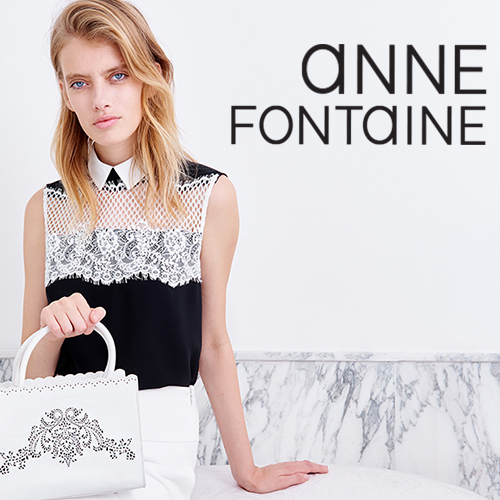A Guide to Kitchen Cabinets: Styles, Materials, and Design Tips
When it comes to transforming your kitchen, kitchen cabinets are one of the most important elements to consider. Cabinets not only serve as essential storage solutions but also set the tone for the kitchen’s overall aesthetic. Whether you’re doing a full kitchen remodel or simply upgrading your existing cabinetry, understanding the different styles, materials, and design trends can help you make informed decisions that match your functional needs and personal style.
In this guide, we will explore the most popular types of kitchen cabinets, materials, and key considerations for choosing the right ones for your space.
Types of Kitchen Cabinets
Kitchen cabinets come in various styles, each offering a different look and feel. Here are the most popular types:
1. Shaker Cabinets
Shaker cabinets are known for their simple, clean lines and timeless design. They feature a five-piece door with a recessed center panel, giving them a classic yet modern appeal. Shaker-style cabinets are versatile and can fit seamlessly into both traditional and contemporary kitchens.
- Best For: Minimalist, transitional, or farmhouse-style kitchens.
- Material: Commonly made from solid wood like maple, oak, or cherry.
2. Flat-Panel (Slab) Cabinets
Flat-panel cabinets, also known as slab cabinets, have a sleek, modern look with a flat, frameless design. These cabinets offer a minimalist aesthetic and are often used in contemporary or modern kitchen designs.
- Best For: Modern or industrial kitchens.
- Material: Typically made from engineered wood or medium-density fiberboard (MDF) with a laminate or veneer finish.
3. Inset Cabinets
Inset cabinets are crafted with doors that fit inside the cabinet frame, providing a flush, clean look. They offer a high-end, custom appearance, often found in luxury kitchens. This style requires precise craftsmanship, making them more expensive than other options.
- Best For: Traditional or high-end kitchen designs.
- Material: High-quality wood, often custom-built for a perfect fit.
4. Glass-Front Cabinets
Glass-front cabinets are a great way to add an open, airy feel to your kitchen while showcasing decorative dishes or glassware. These cabinets typically feature clear, frosted, or textured glass panels.
- Best For: Kitchens with open shelving or to create visual contrast.
- Material: Wood or metal frames with glass inserts.
5. Louvered Cabinets
Louvered cabinets feature horizontal wood slats that create a distinct design and allow for ventilation. They are less common but can make a bold statement in the right setting.
- Best For: Coastal or tropical-themed kitchens.
- Material: Typically made from wood.
Materials for Kitchen Cabinets
The material you choose for your kitchen cabinets affects not only the look but also the durability and maintenance of your kitchen. Below are some common cabinet materials:
1. Solid Wood
Solid wood is one of the most durable and high-quality materials for kitchen cabinets. It’s known for its natural beauty and can be stained or painted in a variety of colors. Popular wood types include oak, maple, cherry, and birch.
- Pros: Long-lasting, natural appearance, can be refinished.
- Cons: It can warp or expand with humidity changes, and it is more expensive than engineered materials.
2. Plywood
Plywood is made by layering thin sheets of wood together, creating a strong, durable material. It’s a common choice for kitchen cabinets because it offers a balance of durability and affordability.
- Pros: Cost-effective, resistant to moisture and warping, strong.
- Cons: Edges may require additional finishing, not as luxurious as solid wood.
3. MDF (Medium-Density Fiberboard)
MDF is an engineered wood product made from wood fibers and resin. It’s smoother and more affordable than solid wood, making it a popular choice for painted cabinets.
- Pros: Smooth surface for painting, affordable, resistant to cracking.
- Cons: Not as durable as solid wood, may swell when exposed to moisture.
4. Particleboard
Particleboard is another engineered material, made from wood particles and resin. While it’s the most affordable option, it’s also the least durable and can deteriorate when exposed to moisture over time.
- Pros: Low cost, lightweight, eco-friendly option.
- Cons: Less durable, susceptible to water damage, lower lifespan.
5. Stainless Steel
For a sleek, industrial look, stainless steel cabinets are a great option. They are highly durable, easy to clean, and resistant to rust and corrosion.
- Pros: Durable, modern, easy to clean.
- Cons: Prone to fingerprints and smudges, expensive, can be noisy.
Design Tips for Choosing Kitchen Cabinets
Choosing the right kitchen cabinets goes beyond just selecting a style and material. Here are some important design tips to consider:
1. Maximize Storage Space
When selecting your kitchen cabinets, think about how you use your kitchen and what storage solutions you need. Consider incorporating:
- Pull-out drawers for pots and pans.
- Lazy Susans or corner cabinets for better accessibility.
- Vertical dividers for organizing baking sheets and cutting boards.
2. Color and Finish
The color and finish of your cabinets can significantly impact the overall look of your kitchen. Some popular cabinet color trends include:
- White cabinets for a clean, timeless look.
- Gray cabinets for a modern and neutral palette.
- Bold colors like navy blue or forest green for a statement-making kitchen.
- Wood stains highlight the natural beauty of solid wood cabinets.
Finishes can range from matte to high-gloss, and your choice will depend on the aesthetic you’re aiming for. For example, high-gloss finishes are ideal for modern, contemporary kitchens, while matte or satin finishes work well in more traditional spaces.
3. Cabinet Hardware
Don’t overlook the importance of cabinet hardware in your kitchen design. Handles, knobs, and pulls can add the perfect finishing touch. Modern kitchens often feature sleek, minimalist hardware like bar pulls, while traditional kitchens may incorporate more decorative pieces such as ornate knobs.
4. Consider Your Kitchen Layout
Your kitchen layout will determine the number and type of cabinets you need. For example:
- Galley kitchens may require upper and lower cabinets to maximize storage.
- Open-concept kitchens might benefit from floating shelves or minimal cabinetry to maintain an open, airy feel.
- U-shaped kitchens often have more room for custom cabinetry solutions like built-in pantries.
5. Soft-Close Hinges and Drawers
One feature that’s becoming a must-have in modern kitchens is soft-close hinges and drawers. These prevent cabinet doors and drawers from slamming shut, adding a touch of luxury and extending the life of your cabinets.
Current Trends in Kitchen Cabinets
As with any element of interior design, kitchen cabinet trends change over time. Here are a few current trends shaping the world of kitchen cabinetry:
1. Two-Tone Cabinets
Two-tone cabinets, where the upper and lower cabinets are painted in different colors, are becoming increasingly popular. For example, combining white upper cabinets with navy blue lower cabinets adds depth and interest to the kitchen.
2. Open Shelving
While traditional closed cabinets remain a staple, many homeowners are incorporating open shelving into their kitchen design. Open shelves can make a kitchen feel more spacious and provide an opportunity to showcase decorative items, glassware, or cookbooks.
3. Minimalist Design
Minimalism is on the rise, with many opting for handleless cabinets or sleek, hidden pulls to create a seamless, streamlined look in the kitchen.
Conclusion: The Perfect Kitchen Cabinets for Your Home
Choosing the right kitchen cabinets involves balancing form and function. Consider the layout of your kitchen, your storage needs, and the overall design style you want to achieve. Whether you opt for traditional Shaker cabinets, modern flat-panel designs, or something entirely custom, your kitchen cabinets play a crucial role in both the functionality and aesthetic of your space.
Ultimately, investing in high-quality materials and thoughtful design will ensure your cabinets not only look beautiful but also stand the test of time in one of the most used rooms in your home.























SUCH A AMAZING POST! THANK YOU....